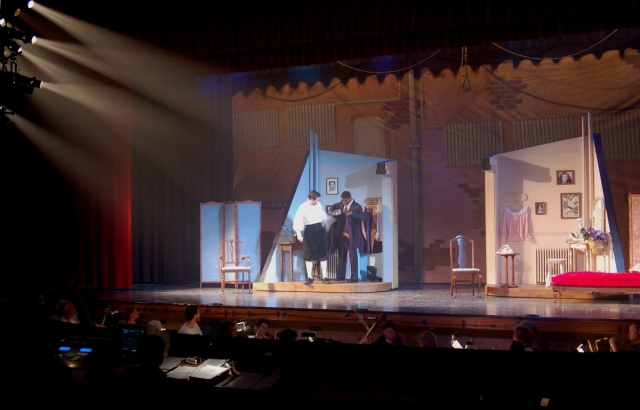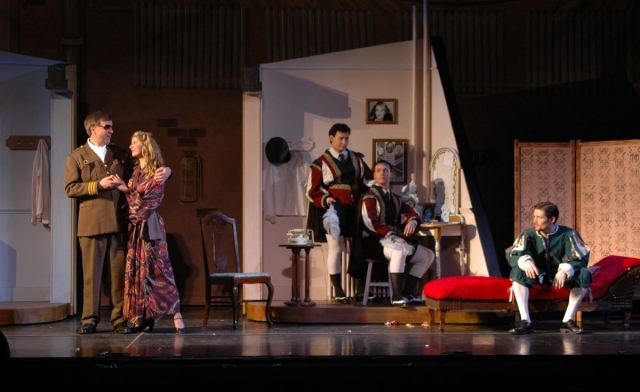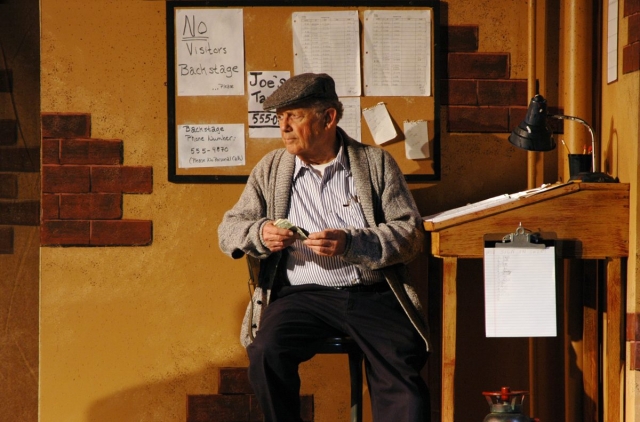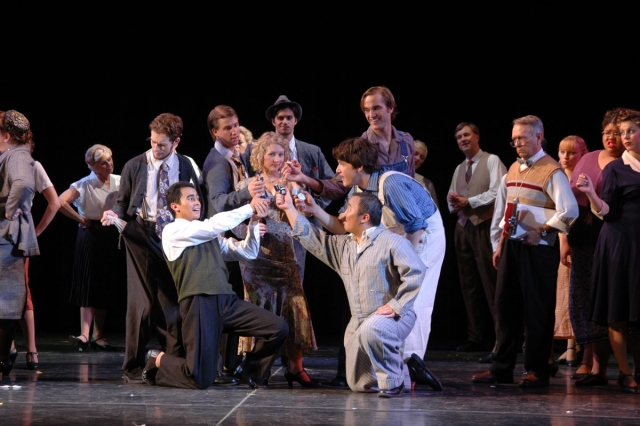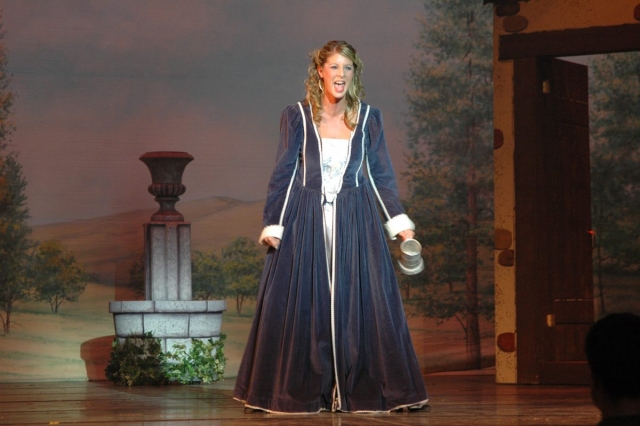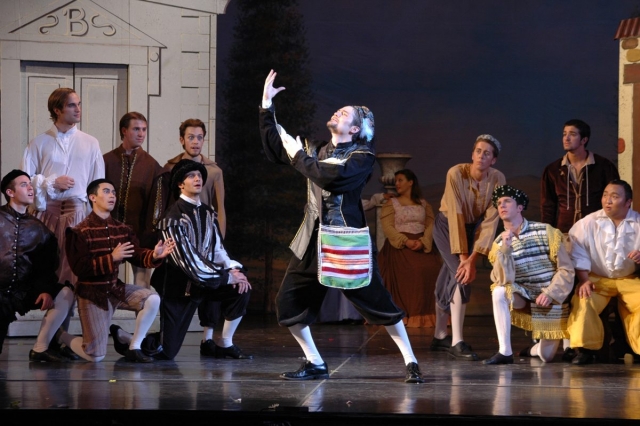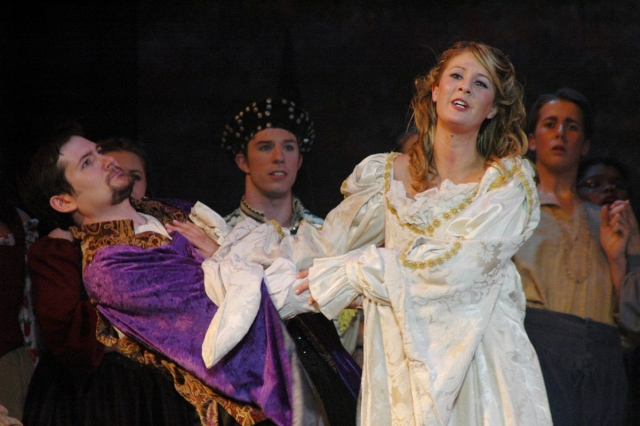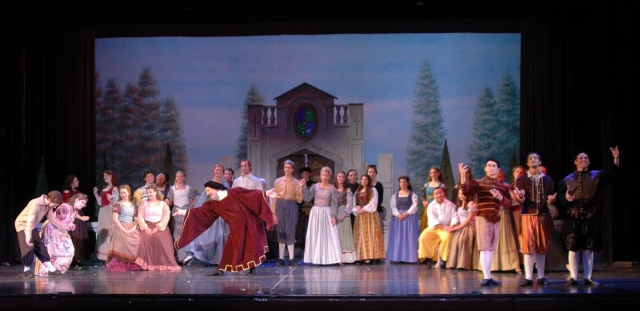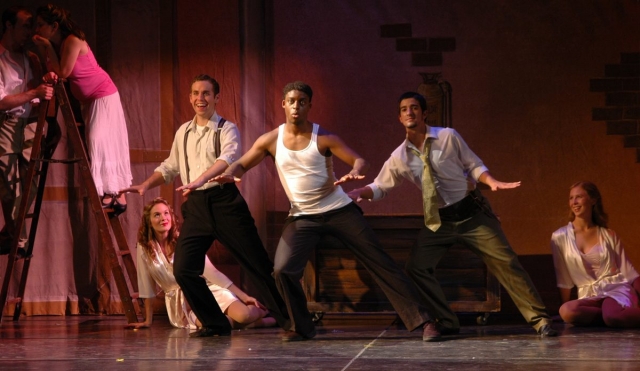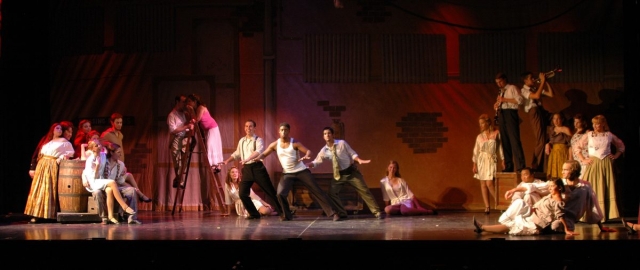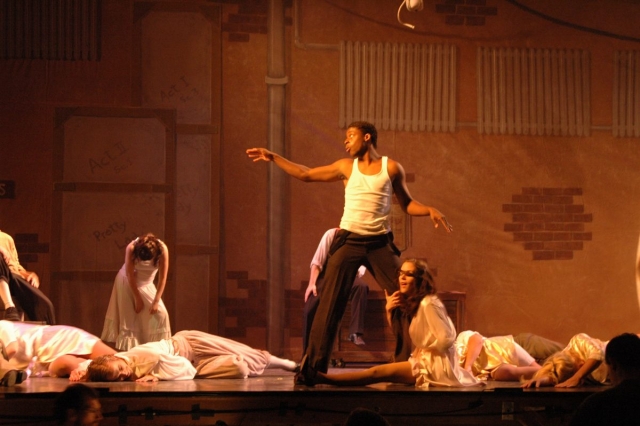
Kiss Me Kate is commonly considered to be one of Cole Porter’s greatest hits, and one of the more important works of the American musical theatre (book by Sam and Bella Spewack). First run in 1948, the show was revived in 1998 for another Broadway run, with significant revisions in both script and score. Overall, the energy level was increased, with faster tempos and jazzier, Swing-style influences in many of the musical numbers in its quest to portray both the frenetic nature of the backstage life as well as capitalize on production innovations in staging Shakespeare since the play was first written. Having first directed this musical for the Huron Playhouse in 1993, I was invited back to direct it again, this time in its revised version.
The conceptual approach to the play focused on its nature as a work of metatheatre, enhancing the “play-within-the-play” structure to playfully skirt the boundary between fantasy and reality, between theatrical pretense and real life. This is achieved through the two intersecting texts, as actual excerpts from Shakespeare’s The Taming of the Shrew are incorporated into the script by the authors. In Kiss Me Kate, producer-actor-director Fred Graham is directing a musical theatre version of Shakespeare’s Shrew at “tryouts” in Baltimore before moving to Broadway. This production features himself as Petruchio and his ex-wife and diva Lily Vanessi as Katharina; these two are still in love with each other, but unable to live with each other. Their interpersonal conflict, aptly characterized in the script as his ego vs. her temper, influences their portrayal of Shakespeare’s characters and vice-versa: as this war of the sexes is happily resolved in Shakespeare, so it is in the lives of Lily and Fred.
Credits: Scenic Design by Dennis Seyer, Lighting by Christopher Mueller, Costumes by Tracey Lyons, Musical Direction by Kerry Glann, Choreography by Dean Schullick. Huron Playhouse (Ohio), June 2007.

